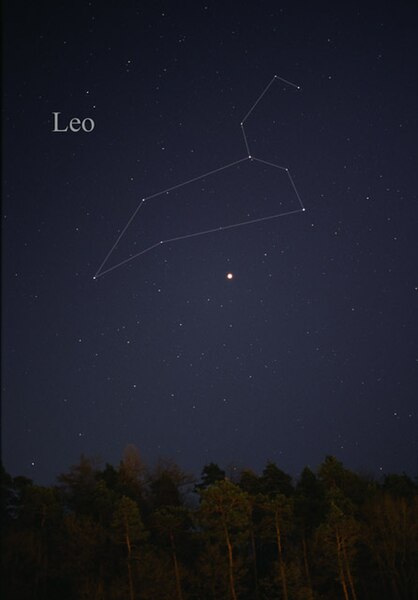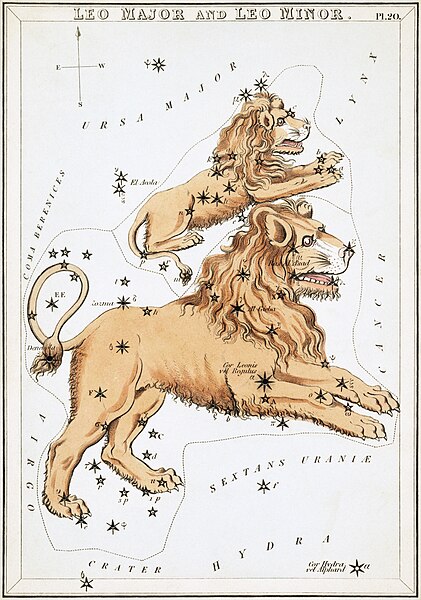Regulus is the brightest object in the constellation Leo and one of the brightest stars in the night sky. It has the Bayer designation designated α Leonis, which is Latinized to Alpha Leonis, and abbreviated Alpha Leo or α Leo. Regulus appears singular, but is actually a quadruple star system composed of four stars that are organized into two pairs. The spectroscopic binary Regulus A consists of a blue-white main-sequence star and its companion, which has not yet been directly observed, but is probably a white dwarf. The system lies approximately 79 light years from the Sun.
Regulus through Celestron CGEM DX 1100 @ F6.3, Canon T3i, Televue 4X Powermate, ISO 800, 30 sec exposure
Regulus is the brightest star in the constellation of Leo (right tip, below is bright Jupiter in 2004).
Leo is one of the constellations of the zodiac, between Cancer the crab to the west and Virgo the maiden to the east. It is located in the Northern celestial hemisphere. Its name is Latin for lion, and to the ancient Greeks represented the Nemean Lion killed by the mythical Greek hero Heracles as one of his twelve labors. Its old astronomical symbol is (♌︎). One of the 48 constellations described by the 2nd-century astronomer Ptolemy, Leo remains one of the 88 modern constellations today, and one of the most easily recognizable due to its many bright stars and a distinctive shape that is reminiscent of the crouching lion it depicts.
The constellation Leo as it can be seen by the naked eye (the bright object in the center of the picture is the planet Jupiter in March 2004).
Leo, with Leo Minor above, as depicted in Urania's Mirror, a set of constellation cards published in London c.1825
Messier 66
The notable gravitational lens known as the Cosmic Horseshoe





